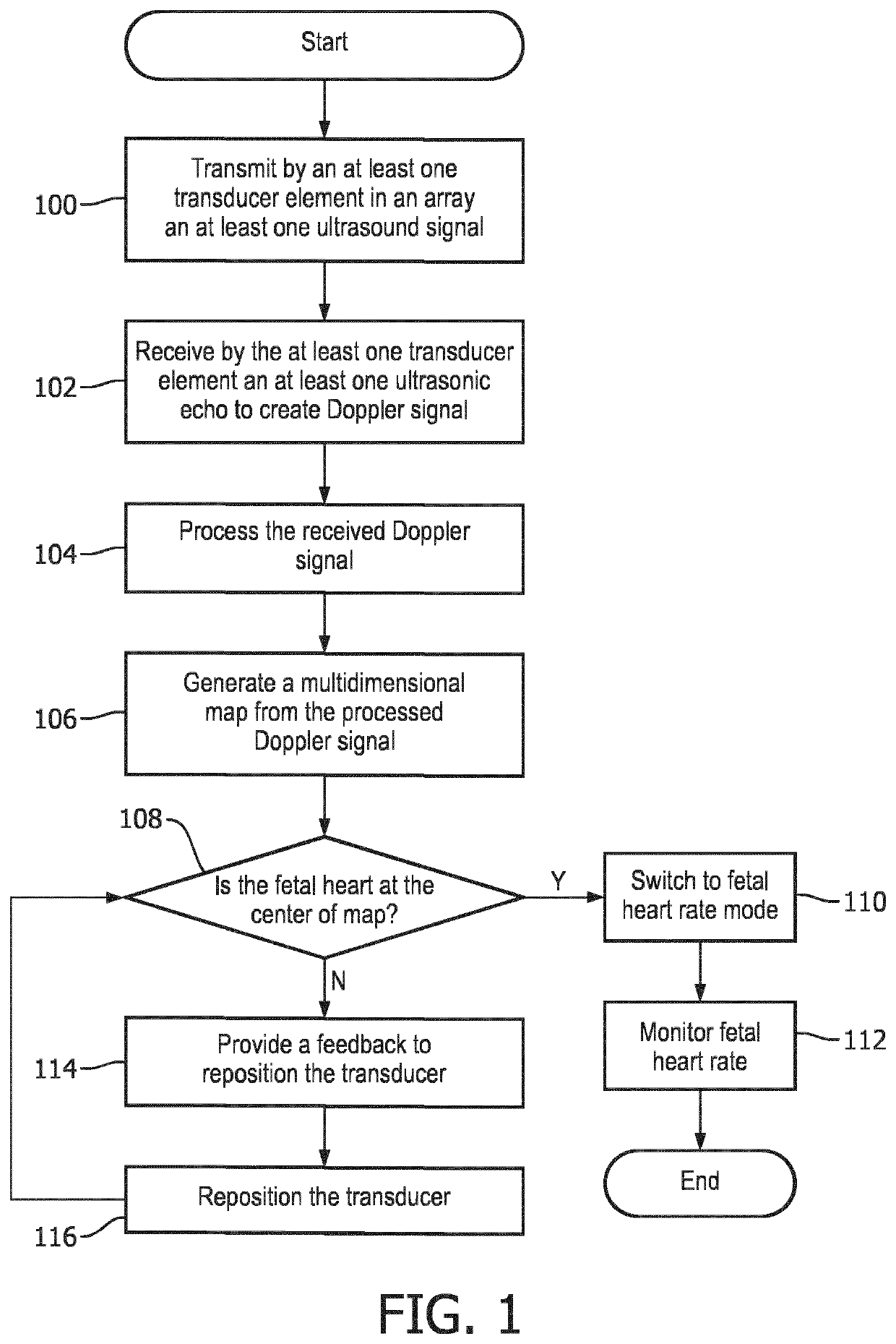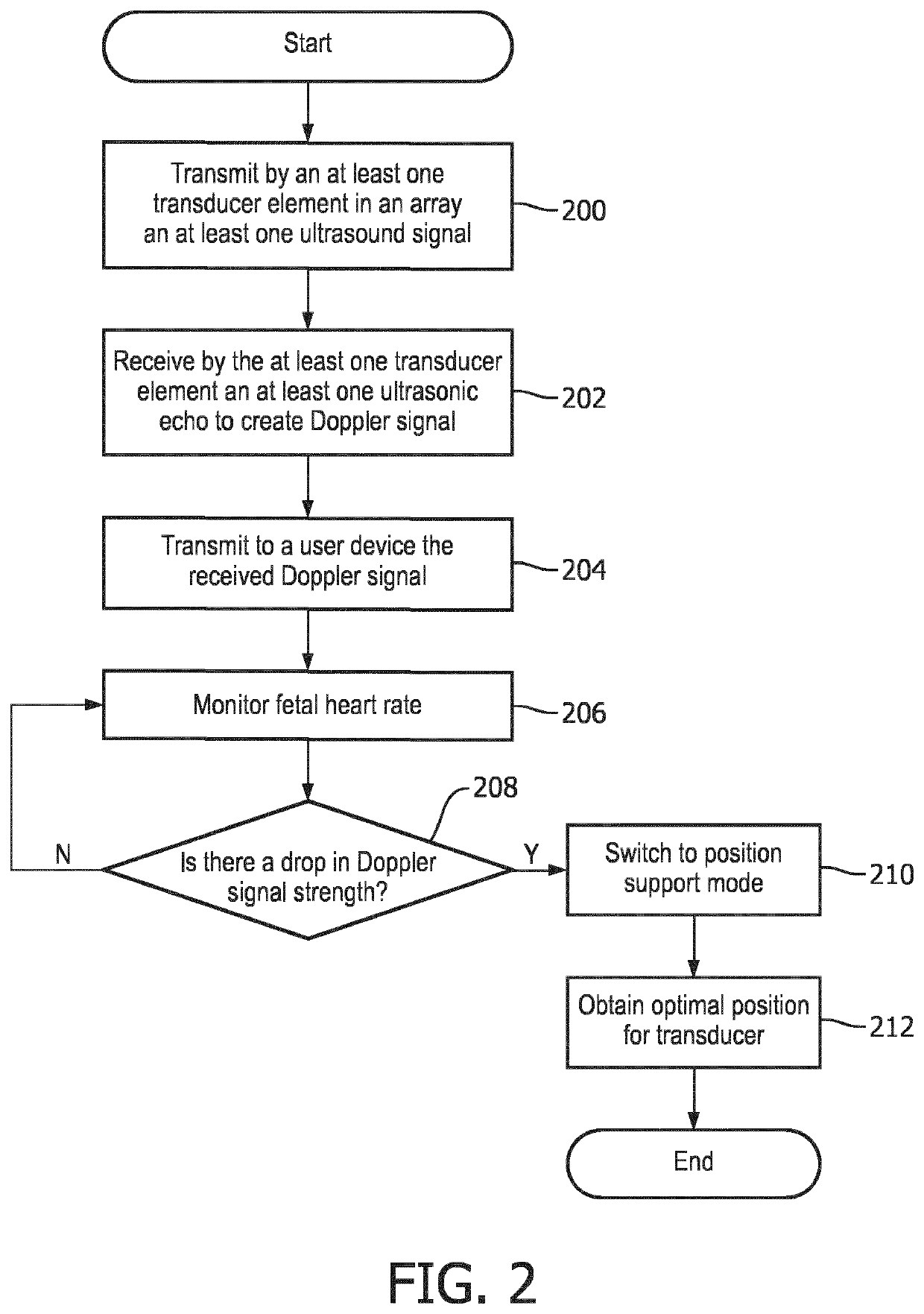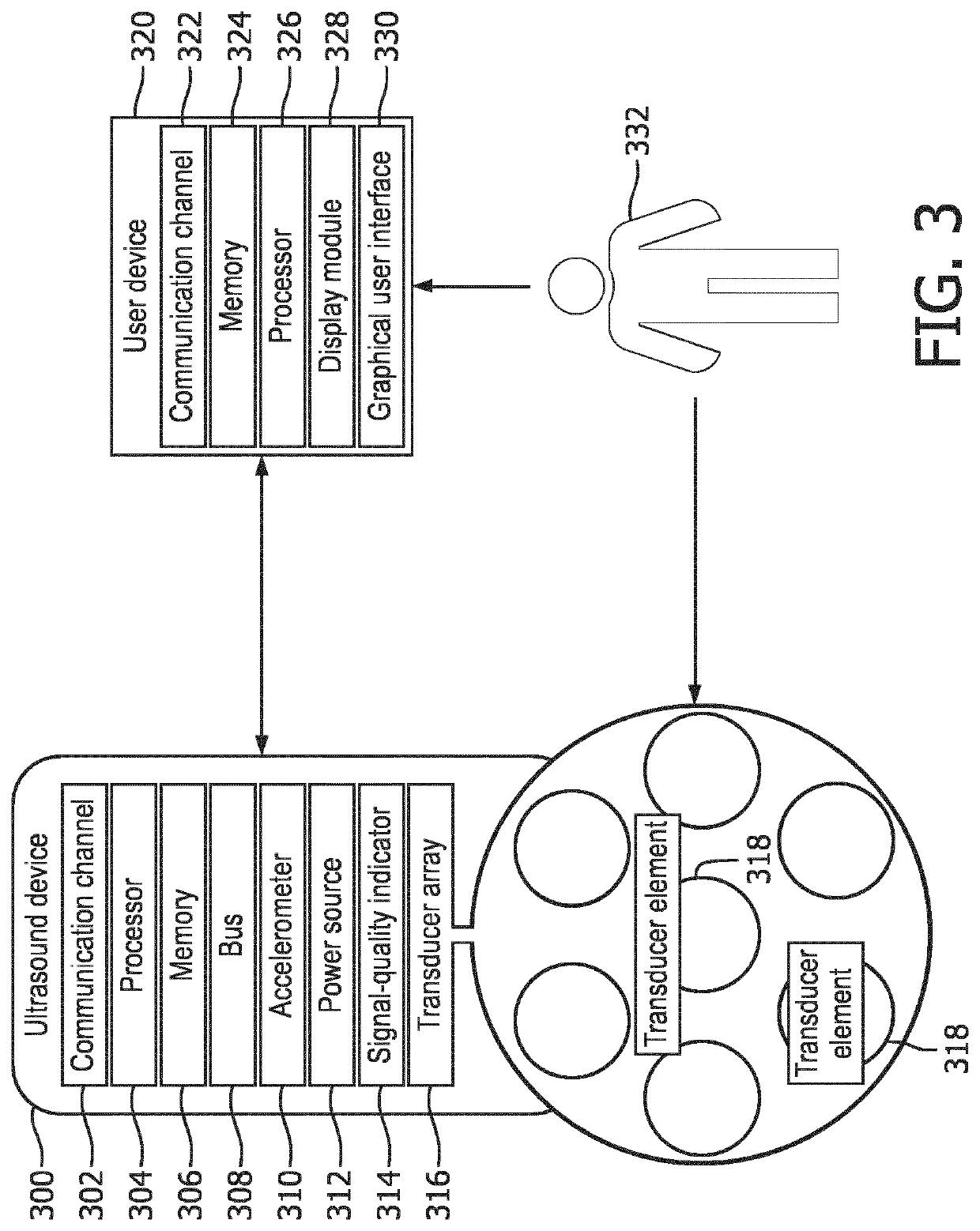Positioning support and fetal heart rate registration support for CTG ultrasound transducers
a technology of ultrasound transducers and support posts, which is applied in the field of positioning support and fetal heart rate registration support of ctg ultrasound transducers, can solve the problems of difficult finding the optimal transducer position, long period of signal loss reported during fhr monitoring, and strong limitations in clinical practice to interpret fhr traces, etc., to achieve better assessment of fetal health status, facilitate the initial placement of the transducer, and facilitate the effect of fetal heart ra
- Summary
- Abstract
- Description
- Claims
- Application Information
AI Technical Summary
Benefits of technology
Problems solved by technology
Method used
Image
Examples
Embodiment Construction
[0031]The following are definitions of terms as used in the various embodiments of the present disclosure.
[0032]The term “depth” as used herein refers to a distance measured from the transducer array plane to a point within the maternal abdomen volume that is being scanned. Depth is set to have a value of “0” at the inner wall of the maternal abdomen and a maximum value at the farthest point from which a Doppler signal can be obtained. The depth may be, in some embodiments, the middle of the sample volume from which the Doppler signal is calculated.
[0033]The term “channel” as used herein refers to a wired or wireless data pathway allocated to each transducer element in a transducer array disclosed in the present disclosure. One channel is set aside for processing the Doppler signal received from all transducer elements when the ultrasound device is used in the fetal heart rate mode (fUR-mode).
[0034]The term “feedback” as used herein refers to an audio, visual, or combined audio and ...
PUM
 Login to View More
Login to View More Abstract
Description
Claims
Application Information
 Login to View More
Login to View More - R&D
- Intellectual Property
- Life Sciences
- Materials
- Tech Scout
- Unparalleled Data Quality
- Higher Quality Content
- 60% Fewer Hallucinations
Browse by: Latest US Patents, China's latest patents, Technical Efficacy Thesaurus, Application Domain, Technology Topic, Popular Technical Reports.
© 2025 PatSnap. All rights reserved.Legal|Privacy policy|Modern Slavery Act Transparency Statement|Sitemap|About US| Contact US: help@patsnap.com



